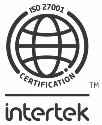Lifting the lid on no code software: the future of insurance

What makes an ideal no code platform? We caught up with INSTANDA’s Head of Solutions, Gari Gono to find out more.
Today’s insurance companies, brokers, MGAs and underwriters are searching for new ways to become vastly more efficient; and to bring new products to market that seek to disrupt. Yesterday’s enterprise-solutions are now startlingly slow and lack the pace needed to respond to momentary markets.
No code software has emerged in their place, giving insurance companies the opportunity to innovate at scale and rapidly change the way they deliver products to customers. Forever.
What is no code?
With no code software, insurance product innovation teams no longer have to wait for developers with specialised skills to help build a product. Knowing the product they wish to create, teams can select the functional components they need from an online library within a no code platform. They simply click to select the components to create their product.
This means products can be brought to market much quicker and at a lower cost. With the right no code platform, you can build and show stakeholders working examples of insurance products in days, or even hours.
No Code Vs Low Code
At first glance, it’s easy to confuse no code with low code. After all, they sound virtually the same. But there are some very important differences between no code and low code platforms.
Let’s begin with low code. Low code software enables developers to design products with minimum handwritten code. Using a low code platform, the developer drags and drops visual blocks of existing code into a workflow to build a product. They bypass the traditional method of hand-coding, but they still need to have a good working knowledge of coding and its application to create insurance products.
No code solutions, on the other hand, are where those developing the product (usually non-developers) do not need to know any programming languages to use the insurance product creation software.
Unlike low code, an engineer is not required to do the initial coding creation of the insurance product. Everything the user needs to create a new product is already built into the platform. In theory, anyone in your organisation who knows how products are created could build a new insurance product.
Avoid legacy issues
What’s more, with no code software you side-step future legacy issues associated with low code software. After all, even a marginal amount of code must be updated. .With no code platforms such as INSTANDA, there’s no update issues; all this is taken care of at source and universally applied to the platform.
No code is at the heart of insurance innovation
What’s more, as no code platforms are responsive; they allow innovation teams to tap into a library of existing product modules and customise them to their own product launch requirements. As clients request more functionality, INSTANDA’s platform brings greater choice and agility. In this no code environment, products are constantly being shaped by the insurance community.
What can you build with no code?
With no code software, insurance companies can digitise their entire insurance product roadmap without having to write a single line of code. Take INSTANDA, for instance. It’s a true end-to-end insurance quote, bind, and policy administration solution; complete with embedded underwriting rules and regulatory updates simplified by changes at source in multiple territories.
INSTANDA allows insurers, brokers and MGAs to quickly bring sophisticated products to market, and at a marginal cost. In the property and casualty space, companies are confidently breaking out of their legacy shell with no code. They are meeting the P&C needs of customers requiring personalised products. Likewise, in Life and Health, insurance carriers and brokers are entering new markets and simplifying purchase processes with customised products.
With no code taking the lead by way of product innovation, we’re also seeing a wave of new world solutions; a step away from insurance mono-lines with products that flex around the individual.
It’s all incredibly exciting and yes, insurance is being redefined by no code. But an important point to remember is that not every no code platform functionality is the same, even if the principle behind the technology is.
So, what makes an ideal no code platform?
At INSTANDA, we strongly believe that a no code platform should realise the following benefits:
No code configuration
If a platform is truly no code, zero code is required (not low code). This means product creation can sit within an insurance company’s business innovation team. Look for a no code solution that:
- Has an easy to use drag and drop interface
- Allows you to write the rules and the platform makes them work
- API ready and fully integrates with legacy systems
- Has full underwriting capabilities with embedded rules
Responsive design
No code software should help you make every customer journey count with more choice, intuitive tools and intelligent features. A truly responsive no code solution should give you:
- The freedom to listen to the customer and design responsively
- The opportunity to explore untouched markets with new products
- The chance to test market multi-channel products with ease
- KYC and compliant content
No code in action
Inviting no code into your product innovation should be a complete game-changer. Make your platform choice wisely and you’ll be able to:
- Explore untapped markets, quickly
- Make light work of writing premium
- Lower customer acquisition and servicing costs
- Vastly reduce operating costs
Already, Aviva is responding to the needs of small businesses through INSTANDA’s no code platform with Aviva 360. Aviva 360 allows businesses to choose the different types of insurance they need with just one straightforward quote. The policyholder only needs to think about one policy renewal date. To be truly responsive to each business’ needs, Aviva required complete control over product creation and distribution using INSTANDA’s no code environment.
It’s not just the likes of Aviva, AXA, Hiscox and Zurich that are already embracing no code though. MGAs such as Imperium Insurance Management and MGAM Ltd are using no code software to rapidly bring new products to market.
With no code, the insurance industry is stepping away from products taking months to create. Those companies are looking for a far more agile solution; one that allows them to respond to customers with real-time insurance products.
To discover how your company could take advantage of no code, simply book a free demo today.





